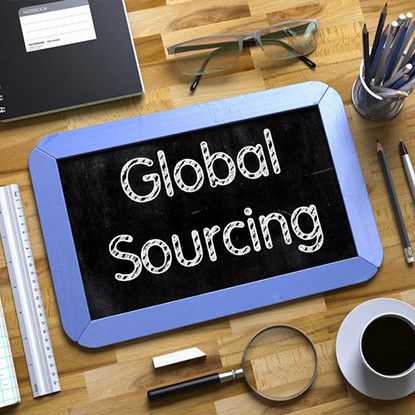What Is Purchase Requisition:
Step-by-Step with Best Practices


Navigate the purchase requisition processes with ease. Discover purchase requisition definition, process, and best practices, empowering you to optimize your procurement workflow and drive efficiency.
Every department plays a crucial role in the race for efficiency, and within procurement, a vital yet sometimes overlooked hero emerges: the purchase requisition (PR). This seemingly simple form serves as the foundation for a smooth and controlled acquisition process.
But what exactly is a purchase requisition, and why is it so important? Let’s explore purchase requisitions, guiding you through a step-by-step breakdown of its creation and highlighting best practices for effective use of PRs.
Whether you’re a seasoned procurement professional or new to the field, understanding and implementing a streamlined PR process can significantly benefit your organization. So, let’s unlock the power of the purchase requisition and ensure your procurement operations run like a well-oiled machine!

Discover how our intelligent document processing solution automates data extraction and approval workflows to accelerate procurement.
A purchase requisition (PR) is a formal document used within a company to initiate the process of acquiring goods or services from an external supplier. It serves as an internal request submitted by an employee (often someone who needs the supplies or services) to the procurement department. Think of it as a way to get permission and authorization to make a purchase.
Here’s a breakdown of the key aspects of a purchase requisition.
Purchase requisition clearly communicates a need for specific goods or services. This document provides justification for the purchase and initiates the formal purchasing process.
CONTINUE LEARNING: What is Procure to Pay (P2P): Definition and Use Cases
The purchase requisition is submitted to the appropriate department head or manager for approval. Depending on the cost or complexity of the purchase, it might require further approval from higher management or the procurement department.
Once all necessary approvals are obtained, the procurement department can proceed with the next steps, such as soliciting quotes from vendors and issuing a purchase order.
By implementing a well-defined purchase requisition process, companies can achieve greater control over their spending, improve operational efficiency, and ensure they acquire the necessary resources to function smoothly.
Empower your procurement team with OrderAction!
Explore how our order management solution simplifies purchase requisitions, automates order processing, and enhances vendor communication
for seamless procurement.
Book a demo now
Purchase requisition processes address various challenges in procurement and supply chain management, including:
Purchase requisitions help standardize and automate the procurement process, ensuring that all necessary approvals and documentation are in place before purchases are made.
PEOPLE ALSO READ: Intelligent Procurement & Payments Processing
By centralizing purchase requests, organizations can better track and manage spending, prevent unauthorized purchases, and negotiate better deals with suppliers.
Purchase requisitions enforce compliance with organizational policies, industry regulations, and budgetary constraints, reducing the risk of fraud, errors, and non-compliance.
By having a clear overview of requested purchases, organizations can optimize inventory levels, minimize stockouts, and reduce carrying costs.
Purchase requisitions enable organizations to evaluate supplier performance, negotiate favorable terms, and maintain relationships with preferred vendors, ensuring timely delivery and quality goods/services.
Here is a step-by-step guide for creating and managing purchase requisitions:
Determine the need for a purchase requisition based on inventory levels, upcoming projects, or requests from departmental stakeholders.

Collect all necessary details for the requisition, including item descriptions, quantities, preferred vendors, delivery deadlines, and budget codes.
Fill out the purchase requisition form provided by your organization’s procurement department or use an electronic requisition system if available. Include all required information and attach any supporting documents, such as quotes or specifications.
Submit the requisition for review and approval according to the established approval workflow. The requisition may need to be reviewed by department heads, budget managers, and procurement personnel before final approval.
Once the requisition is approved, procurement staff will select appropriate vendors based on pricing, quality, availability, and other factors. They may negotiate terms and issue purchase orders to selected vendors.
Vendors receive the purchase orders and begin processing the orders. Procurement personnel monitor the order status and coordinate delivery schedules to ensure timely receipt of goods or services.
Upon delivery, the receiving department verifies the contents of the shipment against the purchase order and packing slip. Any discrepancies or damages are documented and reported to the procurement team for resolution.
Finance or accounts payable staff match the vendor invoices with the corresponding purchase orders and receiving documents. They ensure accuracy in pricing, quantities, and terms before processing payment.
YOU MAY ALSO BE INTERESTED IN: Invoice Reconciliation: The Ultimate Guide
Approved invoices are processed for payment according to the organization’s payment schedule and payment terms negotiated with vendors. Payments are made via electronic funds transfer or by issuing checks.
Maintain detailed records of all purchase requisitions, purchase orders, invoices, and receipts for audit and compliance purposes. Use an electronic document management system or filing system to organize and store procurement documents securely.
By following these steps, organizations can effectively manage their purchase requisition process, streamline procurement operations, and ensure compliance with internal policies and regulatory requirements.
Unlock the power of automation with Artsyl docAlpha! Transform your purchase requisition process by eliminating manual data entry and approval bottlenecks — request a demo today!
Book a demo now
Implementing best practices for using purchase requisitions can optimize procurement processes and ensure efficient resource allocation. Here are some key recommendations:
By following these best practices, organizations can streamline their procurement processes, mitigate risks, and achieve cost savings through effective purchase requisition management.
Optimize your procurement workflow with OrderAction! From purchase requisition to order fulfillment, our solution streamlines every step, saving you time and reducing errors. Get started now.
Book a demo now
A purchase requisition serves as the formal documentation of a business need for specific goods or services. It includes essential details such as item descriptions, quantities, delivery requirements, and any other pertinent information necessary for procurement.
The individual or department responsible for initiating the purchase requisition. Requisitioners are typically the end users or stakeholders who identify the need for goods or services and provide the necessary specifications to procurement teams.
Approvers are individuals or stakeholders who hold the authority to review and authorize purchase requisitions. They ensure that requisitions comply with organizational policies, budgetary constraints, and other relevant criteria before they are submitted for procurement processing.
Procurement encompasses the entire process of sourcing, purchasing, and managing goods and services to meet the needs of an organization. It involves activities such as supplier selection, contract negotiation, purchasing, and supplier relationship management.
A purchase order is a legally binding document issued by the buyer to the supplier, formally requesting the delivery of goods or services at specified terms and conditions. It includes details such as item descriptions, quantities, prices, delivery dates, and payment terms.

Contact Us for an in-depth
product tour!
READ MORE: Difference between Purchase Order and Invoice
Vendors are external suppliers or service providers from whom organizations procure goods or services. They play a crucial role in fulfilling the requirements outlined in purchase requisitions and purchase orders, providing quality products or services in a timely manner.
A budget code is a unique identifier or code assigned to a purchase requisition, indicating the specific budget allocation or funding source to be utilized for the procurement. It helps organizations track expenses and ensure that purchases align with budgetary constraints and financial goals.
An approval workflow refers to the predefined sequence of steps and individuals involved in reviewing, approving, and processing purchase requisitions within an organization. It ensures that requisitions are properly vetted, authorized, and executed according to established policies and procedures.
The delivery schedule outlines the agreed-upon timeline or schedule for the delivery of goods or services as specified in the purchase requisition and purchase order. It includes important details such as delivery dates, locations, and any special instructions for the supplier.
Compliance refers to the adherence to internal policies, procedures, and regulatory requirements governing the procurement process. It encompasses ethical standards, legal obligations, financial regulations, and any other relevant guidelines that organizations must follow to ensure transparency, integrity, and accountability in various procurement activities.
Experience the efficiency of Artsyl docAlpha and OrderAction combined! Discover how our integrated solutions automate purchase requisitions and order management for end-to-end procurement optimization.
Book a demo now
By understanding the significance of purchase requisitions and implementing the best practices outlined in this blog, you can empower your procurement team to function at its peak efficiency. Clear and accurate PRs ensure transparency, minimize errors, and pave the way for informed purchasing decisions.
Remember, a well-defined PR process streamlines communication between departments, reduces approval times, and ultimately, keeps your business on track for success. So, don’t underestimate the power of this unsung hero! Start incorporating these best practices today and experience the positive impact a robust purchase requisition system can bring to your procurement operations.